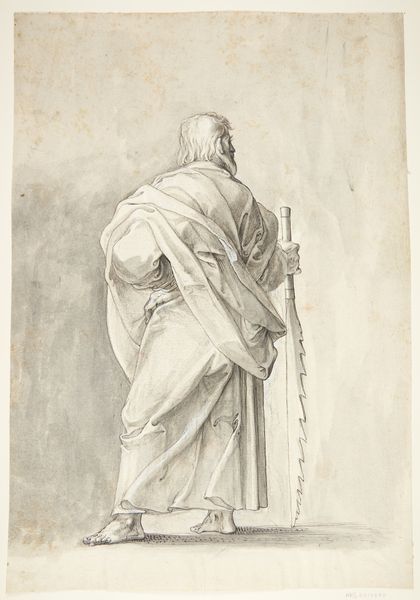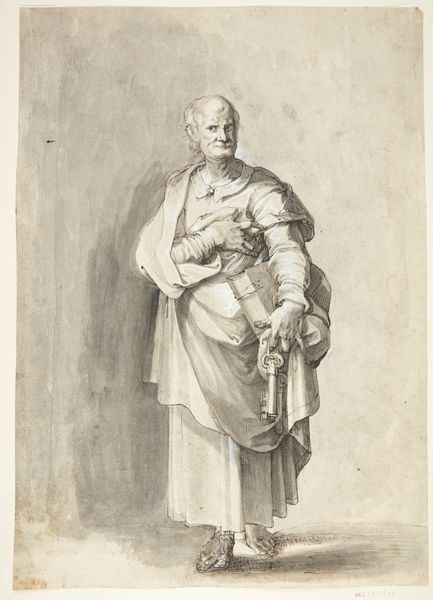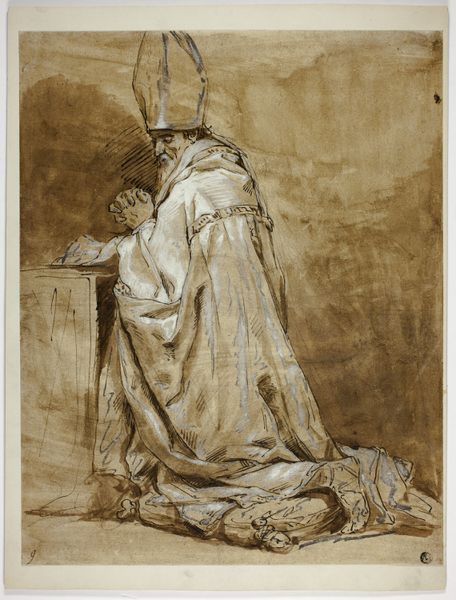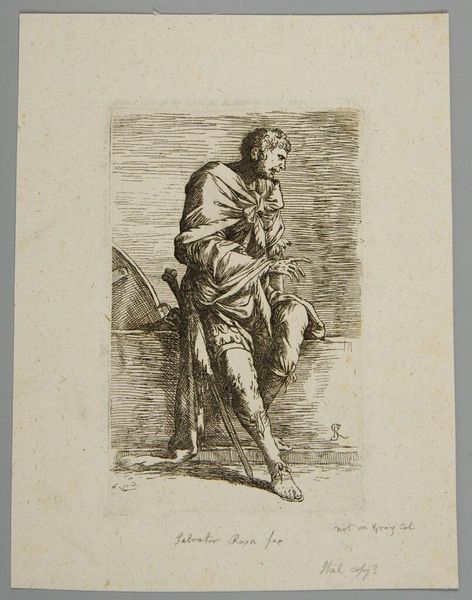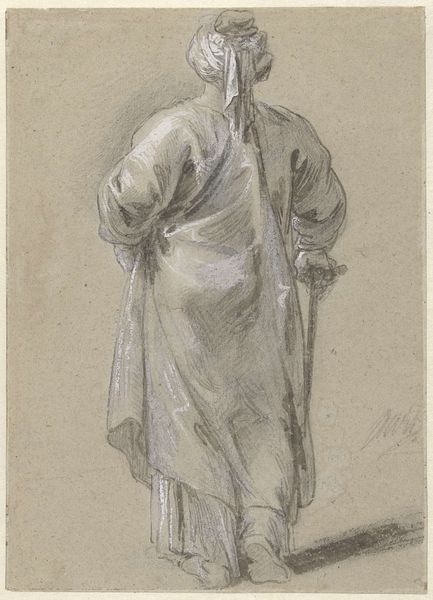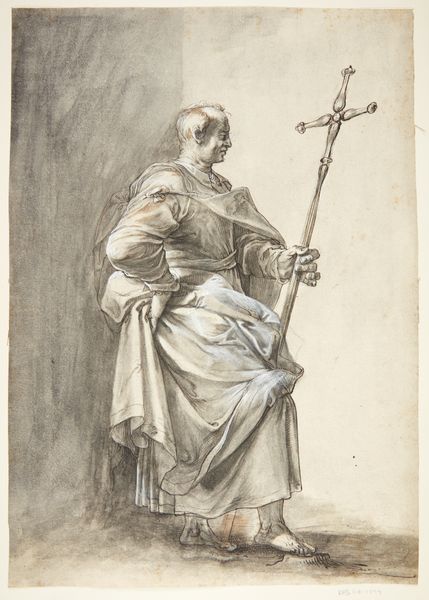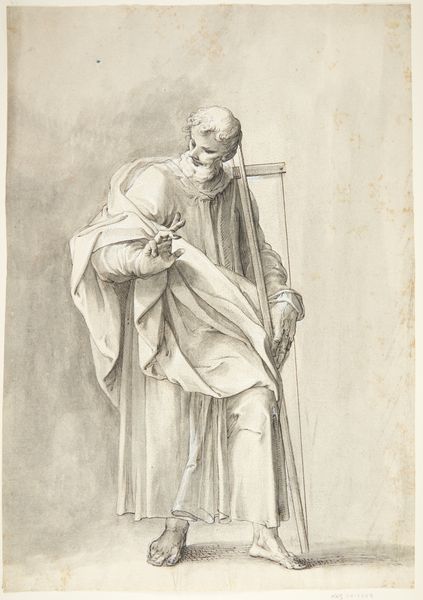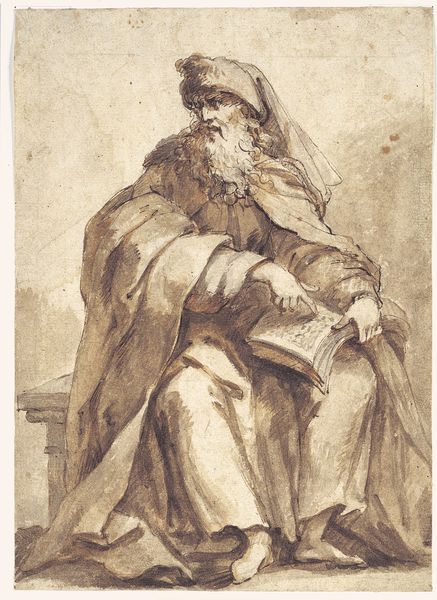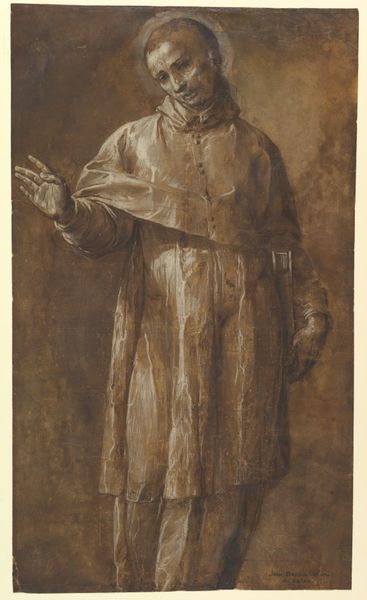
drawing, pencil, graphite
#
portrait
#
drawing
#
baroque
#
pencil drawing
#
pencil
#
graphite
#
graphite
Dimensions: 420 mm (height) x 297 mm (width) (bladmaal)
Curator: Here we have an intriguing graphite and pencil drawing entitled "Jesus og de 12 apostle: Matthaeus," or "Jesus and the 12 Apostles: Matthew," attributed to Matthaeus Gundelach, likely created sometime between 1566 and 1654. It's part of the collection at the SMK, the National Gallery of Denmark. Editor: My first impression is a sense of age and authority. The figure’s weathered face and poised gesture, contrasted with the seemingly unfinished background, suggest he’s stepped out of time, ready to impart some vital wisdom. There's something very compelling in the open gesture of the hand and its slightly skewed angle, like it welcomes an intimate exchange with the viewer. Curator: The piece offers an example of Baroque portraiture through Gundelach's delicate pencil work that demonstrates a command of light and shadow, essential in lending a lifelike presence to the subject. But also consider the implications within religious history. What would this symbolise for its viewers? Editor: Absolutely. Consider the social function of portraying Matthew. Not merely to document his likeness, but to affirm established hierarchies and doctrines of the church, reinforcing cultural narratives through portraiture and artistic display. How might this image then either validate or subtly subvert those ingrained social values in contemporary discourse? I wonder. Curator: It is definitely part of the visual construction of power. How artists contributed to religious narratives shaping societal beliefs. The placement within the museum also plays a crucial role; by elevating it as an art object, the gallery gives credence to the work while separating it from its original purpose. Editor: And let's not ignore Gundelach's visual vocabulary here. By focusing solely on the Saint, he deliberately detaches from the social aspects in his narrative, allowing for his character to shine and demand recognition as part of the Holy legend. Curator: Indeed. Understanding the institutional frameworks that shaped this artwork illuminates much more than artistic intention; it underscores its social influence. Editor: Precisely. I’ll remember to check my personal reaction to its setting as much as I appreciate Gundelach's mastery of form and historical legacy when examining his work.
Comments
No comments
Be the first to comment and join the conversation on the ultimate creative platform.
